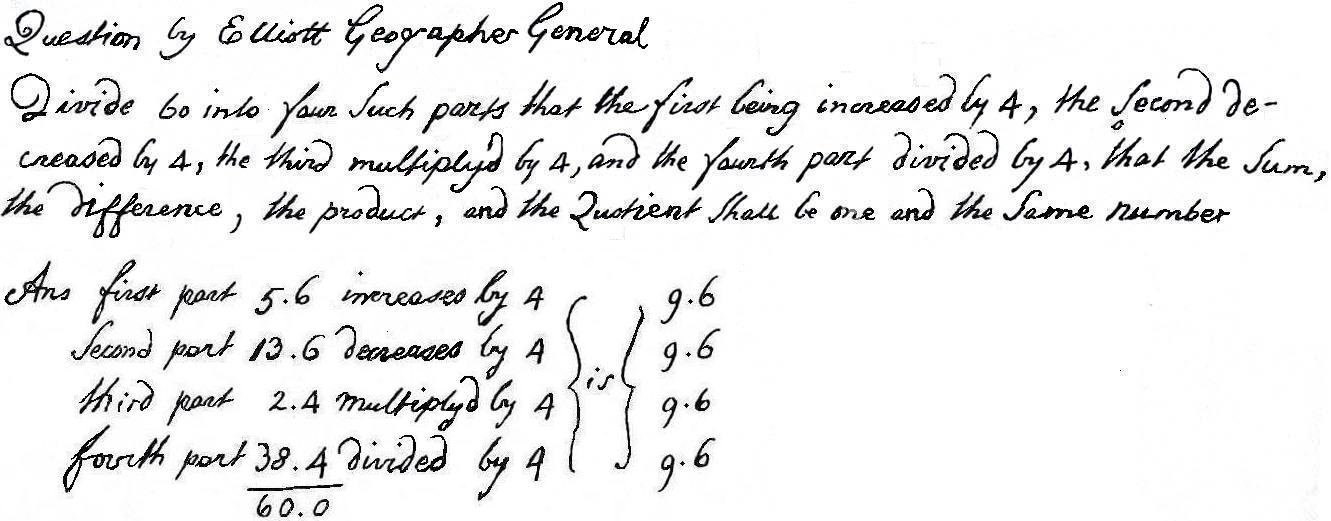- About MAA
- Membership
- MAA Publications
- Periodicals
- Blogs
- MAA Book Series
- MAA Press (an imprint of the AMS)
- MAA Notes
- MAA Reviews
- Mathematical Communication
- Information for Libraries
- Author Resources
- Advertise with MAA
- Meetings
- Competitions
- Programs
- Communities
- MAA Sections
- SIGMAA
- MAA Connect
- Students
- MAA Awards
- Awards Booklets
- Writing Awards
- Teaching Awards
- Service Awards
- Research Awards
- Lecture Awards
- Putnam Competition Individual and Team Winners
- D. E. Shaw Group AMC 8 Awards & Certificates
- Maryam Mirzakhani AMC 10 A Awards & Certificates
- Two Sigma AMC 10 B Awards & Certificates
- Jane Street AMC 12 A Awards & Certificates
- Akamai AMC 12 B Awards & Certificates
- High School Teachers
- News
You are here
Benjamin Banneker's Inscribed Equilateral Triangle - How to Use with Students
Distribute this example of Banneker's handwriting to your students and ask them to figure out what he did and why his method "works." Banneker used his journals to record astronomical observations, as his diary, and as his math notebook. Is the work in your students' math notebooks as clear as Banneker's? Included below are two of Banneker's puzzles in his own writing for your students to read and solve.


Banneker's puzzles can be solved by middle and high school students. Banneker didn't use symbolic algebra to solve these problems and these problems illustrate that there are some problems which are most easily solved without algebra! The mathematics department at my high school sponsored a contest centered on these puzzles. Each grade was assigned a problem to solve and there was one problem open to all students. The students had a number of weeks to solve the problems and Savings Bonds were awarded to randomly chosen correct entries. The contest was quite popular and brought added attention to Banneker's mathematics.
Editor's note: For more problems from Benjamin Banneker’s notebooks, see the author’s article, “The Mathematical Puzzles of Benjamin Banneker,” at the College Board's AP Central website:
http://apcentral.collegeboard.com/apc/members/courses/teachers_corner/34224.html
For more information about Banneker, including images of his Almanac and of a letter to him from Thomas Jefferson, see the website, Mathematicians of the African Diaspora:
http://www.math.buffalo.edu/mad/special/banneker-benjamin.html
John F. Mahoney (Benjamin Banneker Academic High School), "Benjamin Banneker's Inscribed Equilateral Triangle - How to Use with Students," Convergence (July 2010)




